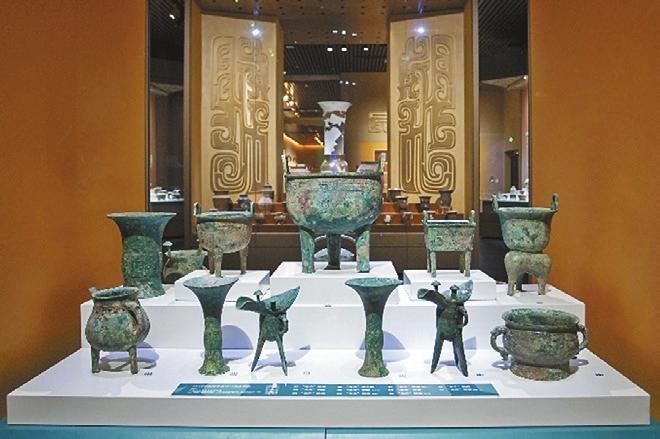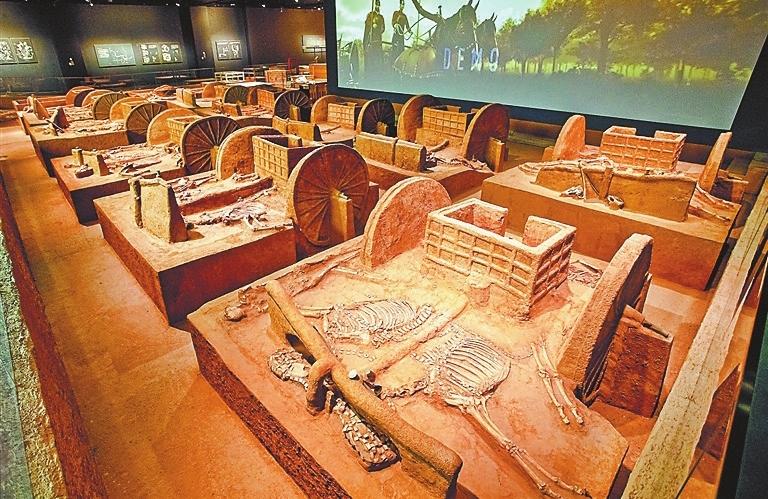


THE new Yinxu Museum in Anyang, Central China’s Henan Province, known as “the hometown of oracle bone inscriptions,” is set to open next Monday. According to Gao Yong, mayor of Anyang, about 4,000 cultural relics will be displayed to showcase the long history of the Shang Dynasty (1600-1046 B.C.) and more than three-quarters of the precious artifacts will be shown for the first time, including bronzeware, pottery, jade objects, and oracle bones. The exhibitions in the new museum are not only a systematic overview and powerful presentation of the research results of Yinxu (or Yin Ruins) archaeology and Shang civilization, but also a new starting point for the protection and utilization of Yinxu in the new era, which is of great significance for linking the past and the future, according to Gao. First excavated in 1928, Yinxu is home to the archaeological remnants of the ancient city of Yin, the last capital of the Shang Dynasty. It was added to the World Heritage List by UNESCO in 2006. The 3,300-year-old oracle bone inscriptions on animal bones and tortoise shells used for fortunetelling and recording events reveal the oldest-known established writing system of Chinese characters. Yan Yalin, director of the archaeology department of the National Cultural Heritage Administration (NCHA), said that Yinxu, a spiritual symbol of the nation, is the first documented capital site of the late Shang Dynasty, as confirmed by archaeological excavations and oracle bone inscriptions. Hailed as the cradle of modern Chinese archaeology, the site has seen the highest frequency and longest duration for archaeological excavations among all the ancient capitals in China. In recent years, the NCHA has coordinated domestic archaeological efforts to advance research on Yinxu’s layout, further clarifying the relationship between the site and its surrounding settlements, yielding fruitful results from interdisciplinary cooperation and technological archaeological research. For example, an urban road system and the remains of an artificial lake in the royal ancestral temple area were found. The oldest confirmed mausoleum of Shang kings was also found. “Discoveries of many satellite settlements and large-size handicraft workshops around this metropolis further portrayed a grand picture of the ancient city of Yin,” Yan said. Over 90% of the exhibits were excavated by generations of researchers from the Institute of Archaeology at the Chinese Academy of Social Sciences since 1950. The 23 chariots unearthed from Yinxu will be the highlights in the new museum. Legendary Shang general Ya Zhang’s life will be reflected through a whole set of objects excavated from his tomb. Also on display will be Shang relics collected from across the rest of present-day China. “Through the exhibits, the public can better view the new findings and comprehensively understand the achievements made in the Shang Dynasty in terms of politics, economy, agriculture, military affairs, among others,” Yan added. More technological platforms will be set up to display digitized material on unearthed relics and related documentation, he said. (Global Times, China Daily) | 
